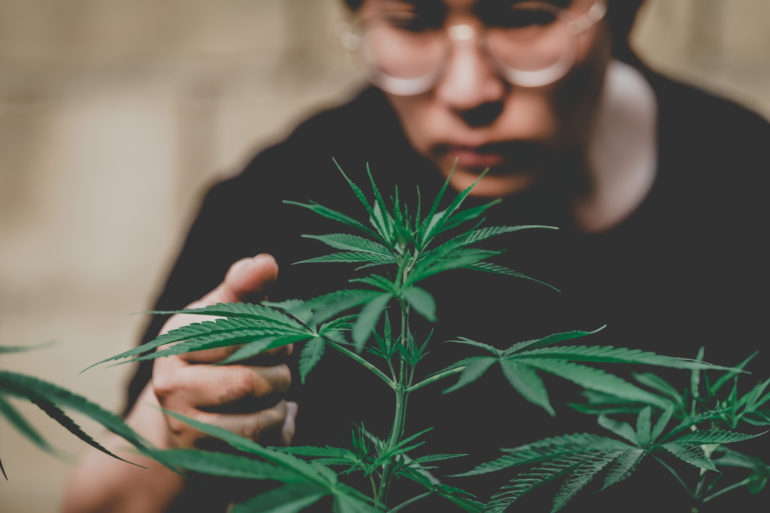Even though they’re cut from the same cloth (or should we say leaf?), hemp and marijuana are two different plants. From potency to legality and even utilization, it’s crucial to understand the differences (and similarities) of cannabis’ most popular offspring.
Let’s start by quickly defining hemp, as many people wonder, “Is hemp marijuana?”
What Is Hemp?
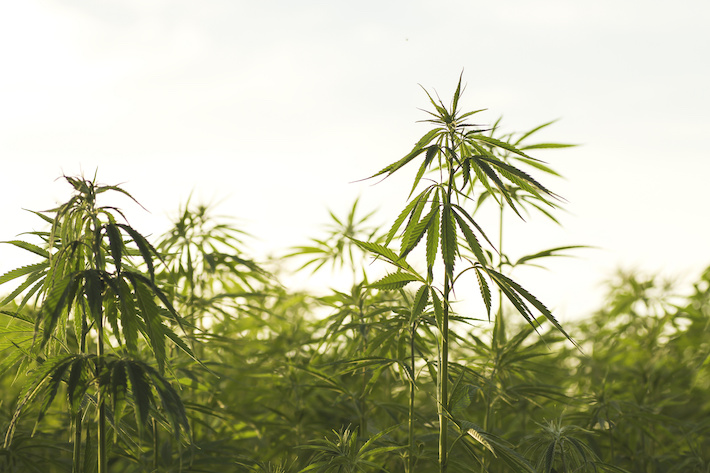
Hemp is a hardy, sustainable member of the cannabis plant family that’s been utilized for millennia both for its industrial and medicinal purposes.
Hemp contains high amounts of cannabidiol (CBD) naturally, as well as very low amounts of THC. This has made it appealing to people of all backgrounds, as the plant won’t get you high the way that other members of the cannabis family will.
History of Hemp in the United States
The hemp plant has had a long history in the U.S., stretching back to the late 1600s colonization period. The first people to do so were the Jamestown settlers who shipped hemp over from England and began planting it in Virginia around 1611. During this time hemp was crucial for clothing and survival equipment during harsh winters.
Historical evidence shows that the Puritans also utilized hemp as a fiber to help create textiles. King George II and the British also used tons of hemp to make military gear like rope and sails, demonstrating just how versatile hemp truly is.
Initially, hemp gained popularity across the U.S., becoming one of the most popular crops in the country. In fact, at one point there was a penalty for farmers who didn’t grow enough hemp!
Hemp is literally sewn into American history. Even Ben Franklin complained that the British demand and prices for raw hemp were so great there wasn’t enough left for the colonists stating, “We have not yet enough for our own consumption.”
However, this popularity and utilization began to fall out of favor in the 1930s when the Marihuana Tax Act began imposing unreasonable restrictions and heavy taxes on both forms of cannabis plants – hemp and marijuana.
Shockingly, the American Medical Association actually opposed the Marihuana Tax Act at the time, citing cannabis’ medical benefits and lack of addiction as being advantageous over other drugs. The tax was about $1 per year, but violating it meant up to $2,000 in fines, 5 years in prison, or both. It also removed cannabis from the U.S. Pharmacopeia.
Thankfully, hemp is now legal in the U.S. again — but we’ll touch more on that later. Now, we know of even more uses for hemp, both industrial and medicinal, than ever before.
What Is Marijuana?
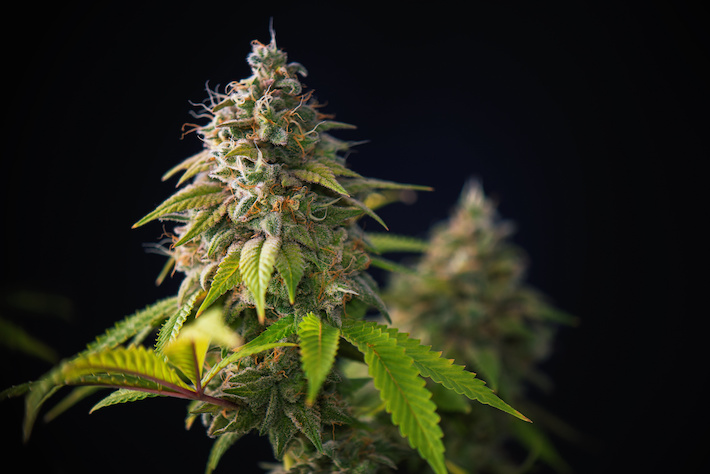
Marijuana, on the other hand, is a historic term that actually comes from outdated, anti-Mexican propaganda. However, marginalized groups are reclaiming the word. Marihuana is Spanish for Mary Jane, and today marijuana refers to a psychoactive plant from the cannabis family that people turn to for recreational and medicinal purposes.
When people discuss medicating with cannabis or getting high, they’re typically referring to the effects that the marijuana plant provides. This is because marijuana is distinguished from hemp due to its higher THC content.
Historically, THC levels in cannabis plants were much lower and closer to that of hemp, hardly distinguishable to the public and regulators. Only recently has selective breeding brought about high-THC cannabis, what researchers call type 1 (THC-dominant) cannabis.
Today, marijuana is defined as cannabis with more than 0.3% THC and usually presents as type I and type II cannabis (1:1 THC:CBD). Hemp, having <0.3% THC, mainly constitutes type III (CBD-dominant), type IV (CBG-dominant), and type V chemovars (industrious, fibrous, no cannabinoids) and derivative products.
History of Marijuana in the United States
The marijuana plant has a rocky history in the U.S., and it’s only just begun to turn around. In the 1840s, OG cannabis scientist and pioneering British physician William O’Shaughnessy wrote the first medical cannabis publications in Western medicine. These gained so much traction that cannabis appeared in the U.S. pharmacopeia in 1850, until the Marihuana Tax Act of course.
During this brief course of wide acceptance, its medical use boomed in the United States, appearing in medicine cabinets everywhere as elixirs. Contrary to popular belief, historian Isaac Campos has debunked the infamous “Mexican Hypothesis” which mistakenly held that Mexicans brought cannabis to America after the Mexican Revolution. In reality, cannabis was already being legally imported from India by major pharmaceutical companies and sold in their retail pharmacies.
Unfortunately and eerily similar to today, the new pharmaceutical industry became focused on pushing hard narcotics and drugs like morphine to Civil War soldiers and veterans. Sadly, this was launched by the invention of the hypodermic needle in 1844 which allowed for rapid self-administration.
Concurrently, the turn of the 20th century was rife with economic disenchantment and unemployment. Also like today, poverty turned into xenophobia and outright racism against minorities who consumed the plant recreationally. The targets were mainly Mexican and Indian immigrants as well as Black Americans.
American politics inevitably became entangled with the xenophobic narrative of the 1900s. Figureheads like Henry Anslinger and President Nixon famously made racist statements in public and private to justify the criminalization of marijuana in a series of anti-cannabis reforms. Despite opposition from researchers and even the American Medical Association, cannabis finally became federally illegal with the 1970 Controlled Substances Act.
Thus, marijuana was federally banned along with hemp. However, it wasn’t until the 90s that the country finally started changing its mind about marijuana and its potential — nearly two decades later. The fight for cannabis legalization continues today.
Let’s Compare: Hemp vs. Marijuana
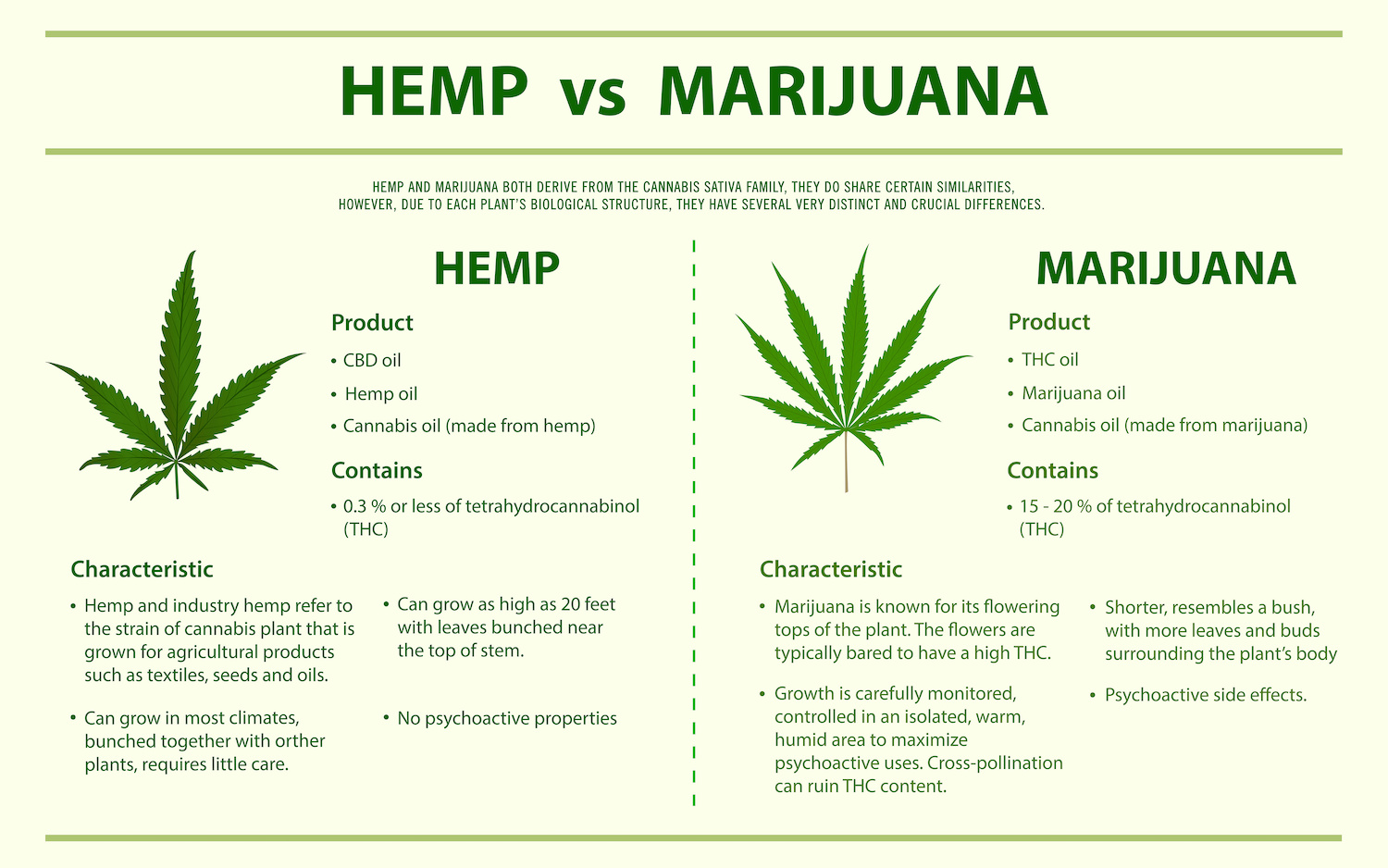
Now that you know what hemp and marijuana are, let’s talk about the differences between hemp and weed, starting with psychoactivity levels.
Psychoactivity
One of the biggest differences between hemp and marijuana is the psychoactivity levels.
Does hemp have THC? Yes, it does, but only in trace amounts. In the United States, hemp is only legal if it contains 0.3% THC or less. At this low amount, the THC will not get you high. So, hemp and hemp-derived products are not designed to get you high.
And, as Anna Schwabe, PhD researcher and educator points out to us, the “low psychoactive potential of hemp makes it more socially and politically acceptable.”
Some hemp-derived products have cannabinoids that are psychoactive. However, hemp-derived CBD, CBN, or CBG products will not make you high. Neither will the plant as a whole. If you smoke hemp flower, for example, you will not experience psychoactive results.
Marijuana, on the other hand, is highly psychoactive. This is because marijuana has much higher THC levels than hemp. The average marijuana flower can have anywhere from 15-30% THC depending on the strain, creating strong intoxicating effects in consumers. Most people turn to marijuana because of the mood-altering, euphoric effects — results you simply can’t get from the hemp plant.
So, if you don’t want to get high but you want to feel supported, hemp is a good option. But, if you don’t mind getting high and feeling a little buzzed, marijuana products are fantastic. It simply depends on the effects you’re looking to experience (as well as the cannabis legality of the state you’re living in).
Legality
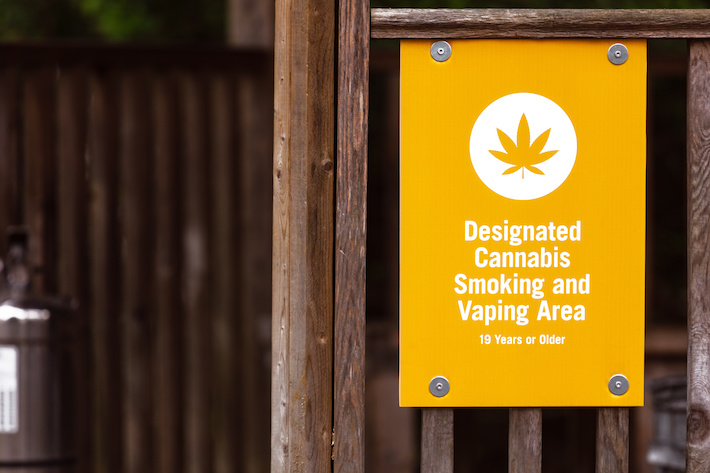
Another drastic difference between hemp and marijuana is legality.
In the United States, hemp is federally legal. Under the 2018 Farm Bill, hemp and hemp-derived products are federally legal as long as they do not contain more than 0.3% THC by dry weight. As long as they fit that regulation, licensed cultivators can grow hemp plants all across the country and use it to create other hemp-derived products.
You can legally buy and possess hemp-derived CBD products in all fifty states. Some states have stricter rules on the type of CBD, but it is legal in some capacity in every area you go to.
This is simply not the case for marijuana. In fact, it’s the opposite.
Marijuana is federally illegal in the United States. The plant is only legal on a state-by-state basis, with some states legalizing the plant strictly for medical purposes. While there have been some attempts to legalize marijuana on the federal level, none of them have been successful, leaving the plant to be considered a controlled substance.
“The federal legalization of marijuana in the U.S. is a complex and evolving issue,” says Schwabe. “While the legalization of hemp at the federal level was a significant step forward, marijuana faces additional challenges due to its higher THC content and its association with psychoactive effects.”
Scwhabe mentions that the overall attitude of the plant is shifting, but that many factors have to come into play in order for the plant to be legalized federally. This includes “changing public attitudes, further scientific research on the benefits and potential risks of marijuana, and the evolving political landscape.”
“Additionally,” Schwabe notes, “issues related to taxation, regulation, public health concerns, and interstate commerce will need to be addressed.”
For now, this means that while hemp flourishes under federal legalization, the issue of marijuana remains debated.
Utilization
While you can enjoy both hemp and marijuana in similar ways, the overall utilization of the plants has been quite different over the years.
Hemp has always been praised for its versatility as a crop. As Schwabe points out, “Hemp has a long history of industrial uses and can be used to produce a variety of products, including textiles, paper, biodegradable plastics, construction materials, and biofuels.”
She goes on to explain to us that “these industrial applications have garnered support from various industries and lawmakers who recognize the economic potential of hemp.”
More than that though, hemp and hemp-derived products are also popular for their therapeutic effects, as consumers can enjoy them without the worry of getting high. The plant has been known to help with various things, but some of its main benefits include having antioxidants and anti-inflammatory properties.
“The rise in popularity of cannabidiol (CBD)… has contributed to the wider acceptance of hemp,” Schwabe explains. “CBD has gained attention for its potential health benefits; the perceived therapeutic value of CBD has helped destigmatize hemp and create a positive association with the plant.”
With this, hemp-derived CBD products are more popular than ever before, and we’re continuing to learn more ways to utilize the cannabinoid and the hemp plant as a whole in these health and wellness products.

Marijuana, however, isn’t relied on to make products other than ones for medicinal or recreational purposes. In other words, you won’t find marijuana concrete or marijuana fabric the way you do with hemp. This largely has to do with harsh federal regulations and the simple lack of ability to work with the plant in the way that we can use hemp. Regardless, the marijuana plant is utilized to help with medical purposes, as well as for recreational reasons like boosting mood and enhancing stimulation.
Similarities Between Hemp and Marijuana
We’ve talked a lot about hemp and marijuana differences, but these plants share a few similarities, as well. Let’s talk about what hemp and marijuana have in common.
Cannabis Plant Genus
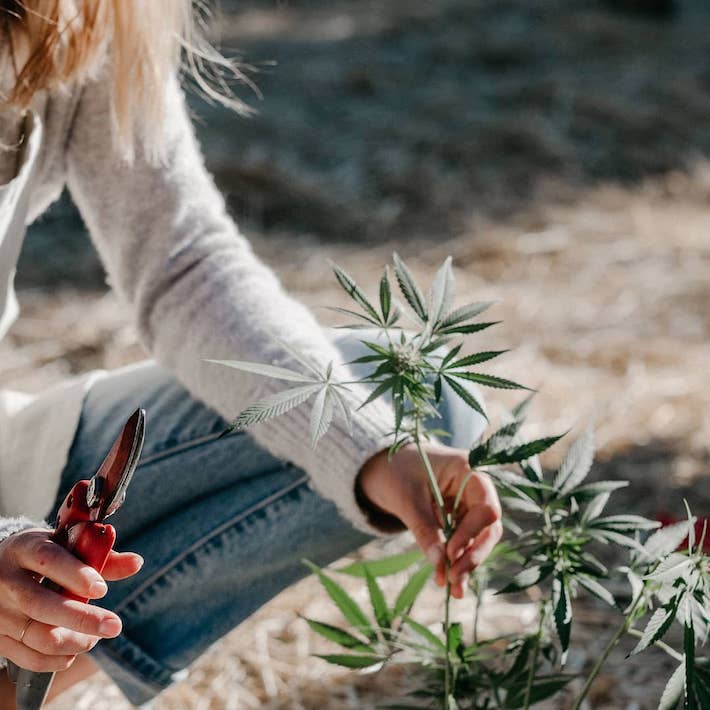
It may be obvious, but both hemp and marijuana come from the same cannabis plant family. This is why they both largely contain the same cannabinoids and similar properties; they just don’t have the same amount of these compounds.
Many people ask, “Is hemp marijuana?” when, in fact, hemp is cannabis. As is marijuana. Both hemp and marijuana are considered “cannabis,” and it’s often used as an umbrella term to encompass both.
Along the same vein, people wonder, “Is hemp the same as CBD?” and the answer is also no. Hemp contains cannabidiol (CBD), and you can have hemp-derived CBD products, but CBD is a compound within both hemp and marijuana plants.
Drug Testing
An unfortunate similarity between hemp and marijuana is that both may cause you to fail a drug test. Marijuana will certainly cause you to fail because of the high THC levels, while hemp poses a lower possibility; though, it can still happen.
Hemp won’t cause everyone to fail a drug test. With hemp, it depends on how often you consume it and if it has any levels of THC. Sadly, legal, trace amounts of THC (0.3%) can build up in the system over time and cause you to fail a drug test — mostly found in hemp products that are full spectrum.
If you just have one dose of full-spectrum hemp, you shouldn’t have to worry about failing, as this amount won’t be detectable. However, over time and with consistent consumption, you will have to worry about the test picking up the residual amounts of THC in the body from your hemp products.
Frequently Asked Questions
What Is the Main Difference Between Hemp and Marijuana?
The main difference between hemp and marijuana is the quantity of delta-9 THC. Hemp is specially grown to carry less than 0.3% THC as per federal guidelines. If it carries more than 0.3% THC, it’s classified as marijuana, which is federally illegal (but legal in some states).
What Is Hemp Used for?
Historically, industrial hemp and its fibers have been used for clothes, rope, shoes, carpets, and paper. Specially grown high-CBD, low-THC hemp varieties are more commonly used to create CBD oil, CBD capsules, and CBD topicals for health and wellness.
What Is Marijuana Used for?
Marijuana is used for a variety of different medicinal and recreational purposes. It carries large quantities of THC, the compound known to cause a “high” or feeling of euphoria. Many medical cannabis users consume high-THC marijuana for pain, inflammation, anxiety, depression, epilepsy, appetite stimulation, and glaucoma. Recreational users enjoy the feeling of THC in social settings.
What Does the Marijuana Plant Look Like?
Marijuana plants tend to be short, dense, and bushy with broad leaves situated all along the plant’s stalk. Marijuana plant height is dependent on the strain. Indicas are short and unlikely to grow any taller than 6 ft, while Sativas can grow up to 20 ft. Hybrids can either be short or tall depending on whether they’re Indica or Sativa-dominant.
What Does a Hemp Plant Look Like?
Hemp plants are slim and very tall, reaching a height of 18 to 22 ft. Hemp leaves are also very skinny and are commonly found nearer the top of the stalk alongside the trichome-rich buds. Hemp plant color varies. Some are a lighter green, while others have a greyish hue.
Can You Smoke Hemp?
You can smoke hemp flowers (buds) and leaves, provided they’re cured and dried beforehand. Smoking hemp bud is a very popular choice among users wanting an instant hit of cannabidiol (CBD) and other valuable hemp plant compounds.
Does Hemp Have Buds?
Hemp has buds which are often referred to as flowers. They appear in bunches or clusters nearer the top of the stalk and are covered in fine, crystal-like growths called trichomes. These bunches or clusters are also known as colas.
Do Hemp Seeds Have THC?
Yes, hemp seeds can carry THC but in very small, almost negligible, amounts. Consuming the seeds of hemp will not cause a high nor will it produce any euphoria. There is some immunoreactivity if consumed in substantially large doses.
Does Hemp Have CBD?
Hemp does contain CBD. The quantity of CBD found in hemp depends entirely on the strain. Regular industrial hemp carries up to 4-6% CBD, while specially grown varieties of hemp can have up to 20-25% CBD. The specially grown varieties of hemp are commonly used for CBD oils.
What’s the Difference Between Hemp-derived CBD and Marijuana-derived CBD?
There’s no difference between the cannabidiol (CBD) found in hemp plants and marijuana plants. CBD is the same compound regardless of the plant from which it’s extracted. The effects and benefits within your body are the same.
Understanding the Unique Properties of Hemp vs. Marijuana
Marijuana and hemp may come from the same plant genus, but these flowers have some key distinctions. Understanding the difference between marijuana and hemp is key to having the best experience possible, as each plant offers unique results across the board.
Whether you’re looking to feel a little giggly or you want to help your muscles and joints decompress, these plants have plenty to offer. You just have to decide which one is best for you.
References (7)
- M.D, M. K., & PhD, J. L.-S. (2021). Medical Marijuana: Dr. Kogan’s Evidence-Based Guide to the Health Benefits of Cannabis and CBD. Penguin Publishing Group.
- R.N, M. L. M. (1997). Cannabis in Medical Practice: A Legal, Historical and Pharmacological Overview of the Therapeutic Use of Marijuana. McFarland.
- Campos, I. (2018). Mexicans and the Origins of Marijuana Prohibition in the United States: A Reassessment. The Social History of Alcohol and Drugs, 32, 6–37. https://doi.org/10.1086/shad3201006
- Musto, D. K. (1972). The Marihuana Tax Act of 1937. Archives of General Psychiatry. https://doi.org/10.1001/archpsyc.1972.01750200005002
- Blickman, T., Jelsma, M., & Bewley-Taylor, D. (2017). The Rise and Decline of Cannabis Prohibition – The History of Cannabis in the UN Drug Control System and Options For Reform. Transnational Institute. https://www.tni.org/en/publication/the-rise-and-decline-of-cannabis-prohibition
- Industrial Hemp in the United States: Status and Market Potential. USDA. https://www.ers.usda.gov/webdocs/publications/41740/15853_ages001ec_1_.pdf
- Farm Bill. USDA. https://www.usda.gov/farmbill
